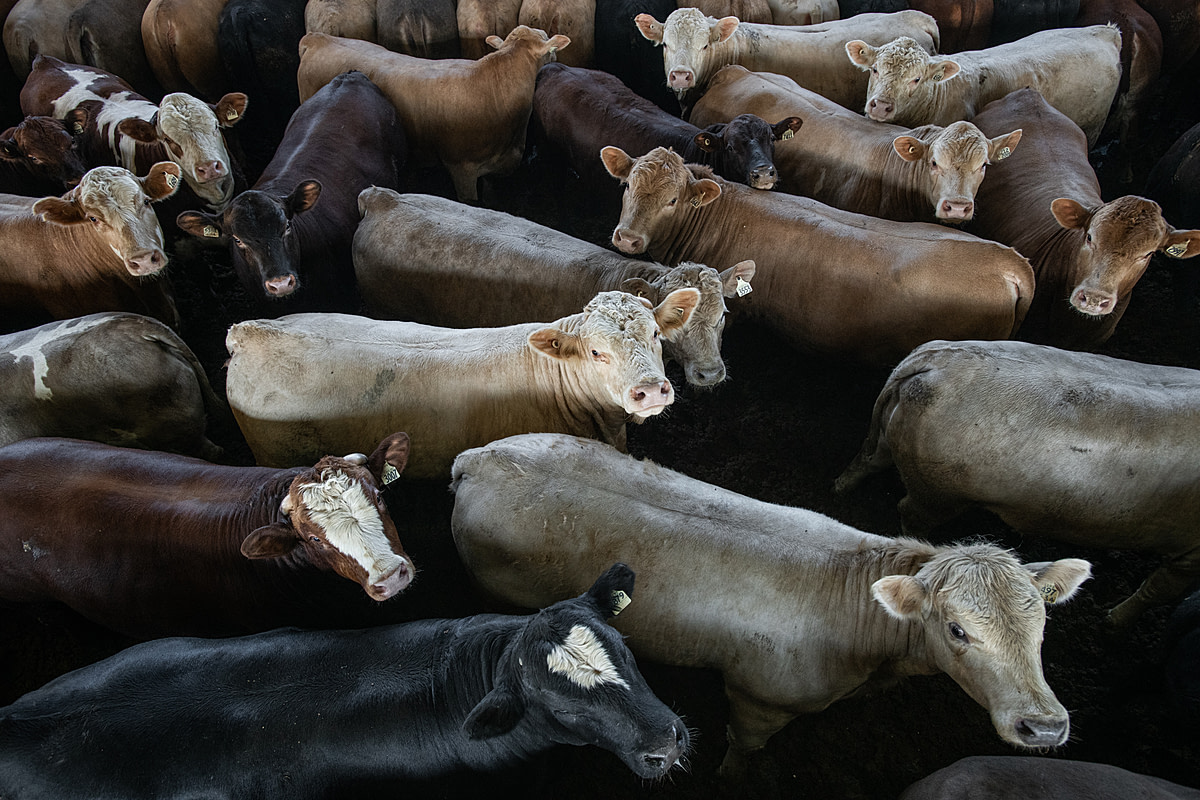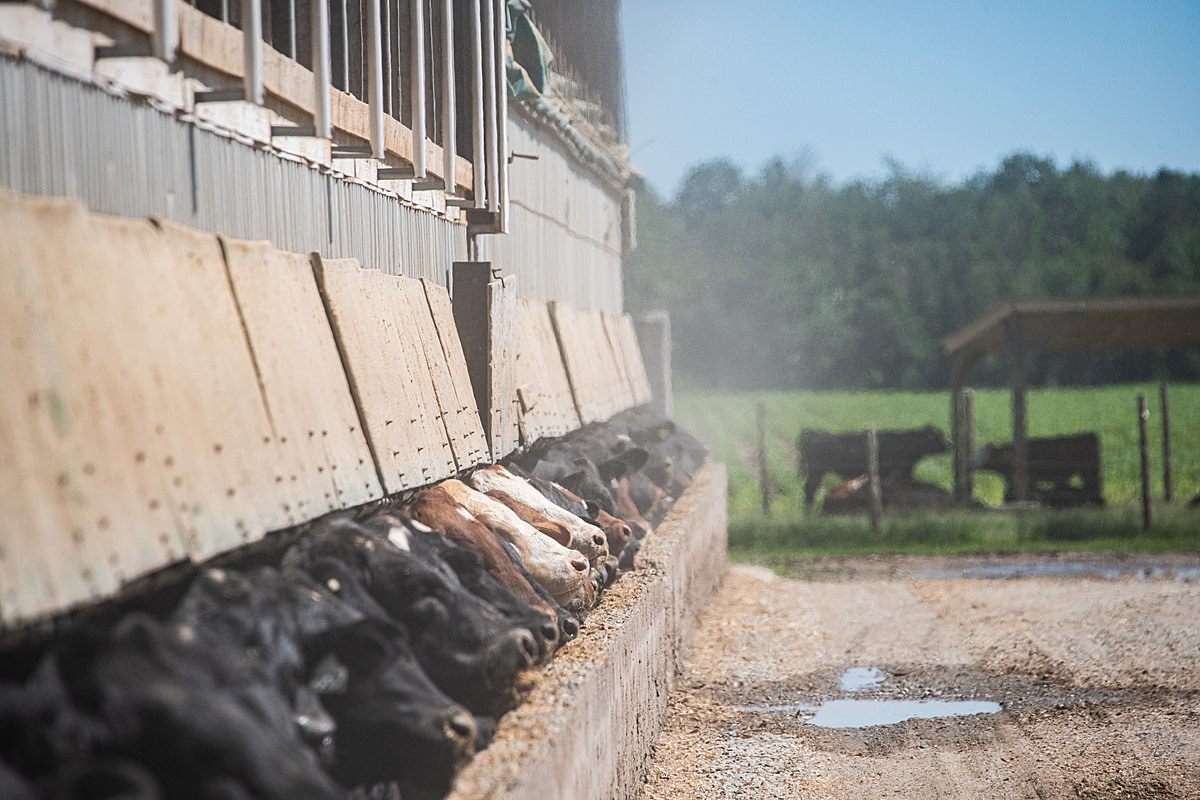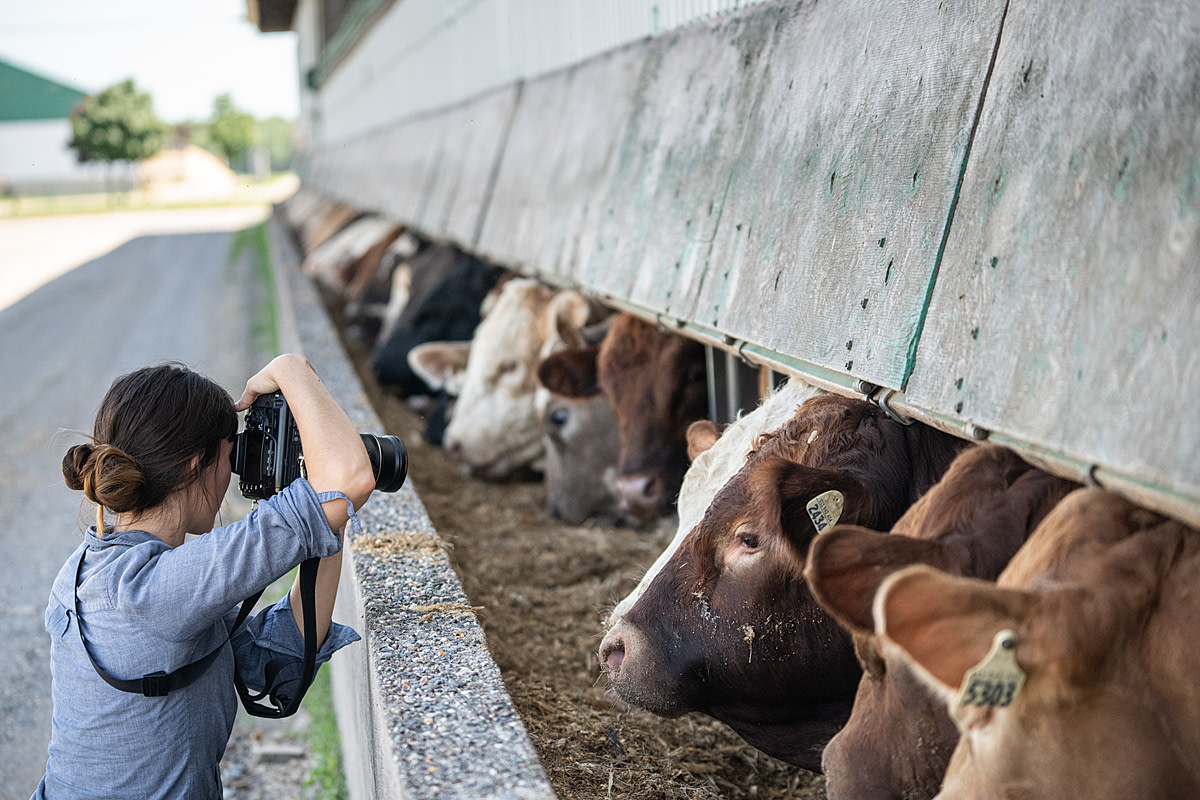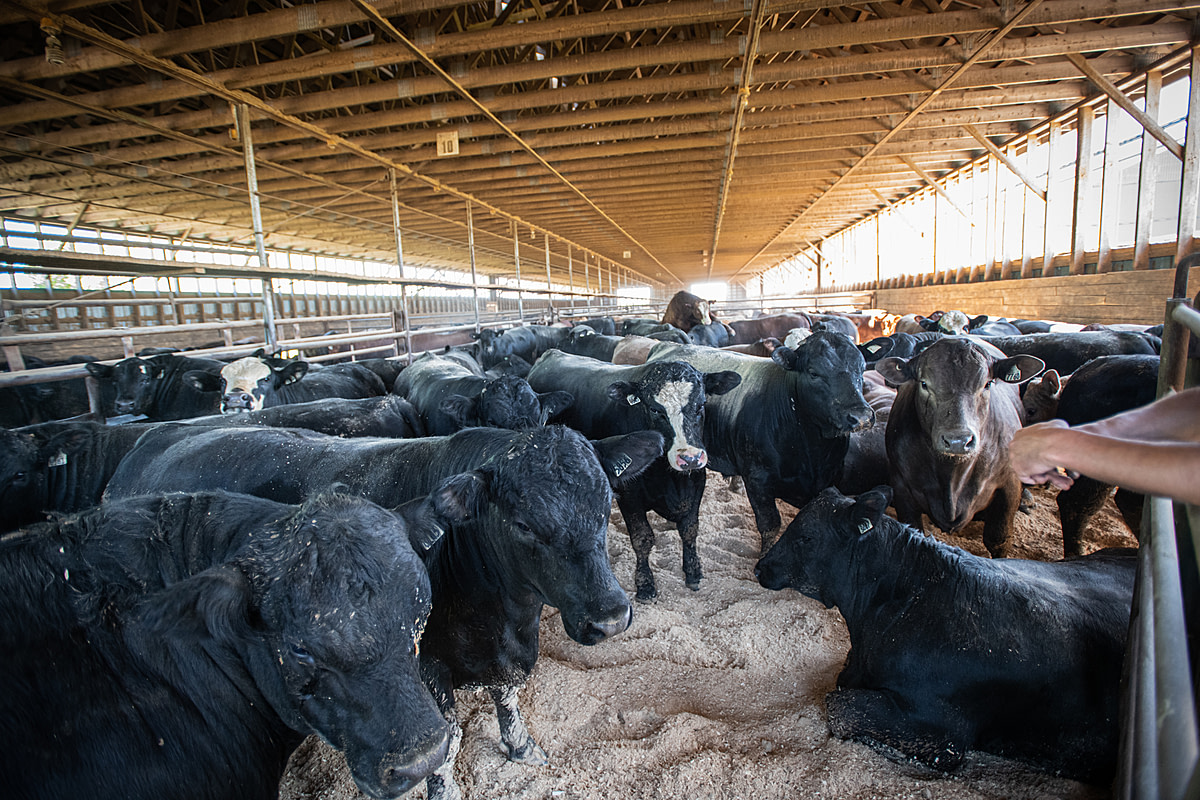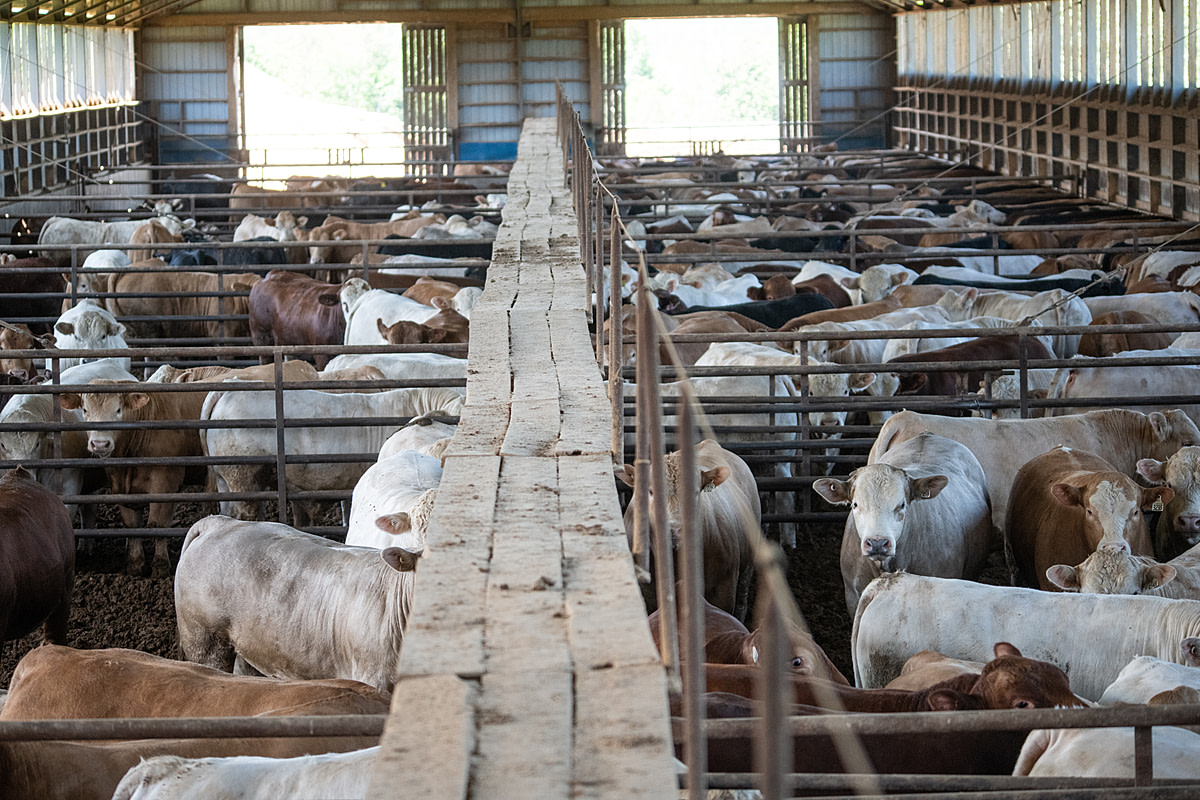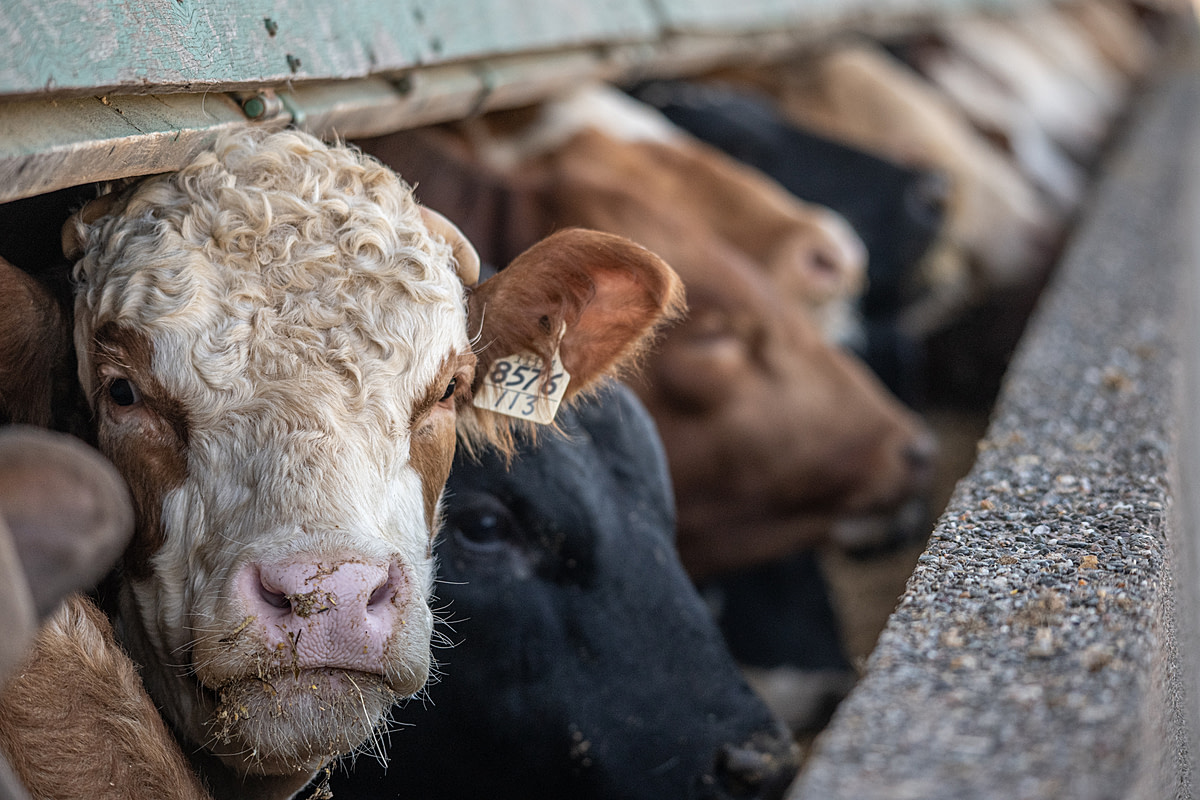Cattle living in a feedlot. Canada, 2022.
Jo-Anne McArthur / We Animals
Quebec has the most cattle farms of any Canadian province. Last month, We Animals Founder Jo-Anne McArthur toured rural Quebec with a local investigator to document the lives of these animals.
“After I get home from a multi-day shoot, I take a while to come down from the incomprehension of what I’ve been immersed in. Both the direct and indirect violence are so confusing. What I mean is that I can never seem to believe that I live in a world with billions suffering and the environment being ravaged too.” ― Jo-Anne McArthur
Photographers: Jo-Anne McArthur, Julie LP
At present, there are approximately 1.13 million animals on cattle farms in the province of Quebec, and around 11 million across the whole of Canada. Before slaughter, animal farmers send cattle to feedlots to be fattened. According to federal government statistics, at least 70,000 cattle reside in feedlots in Quebec.

Cattle living in a feedlot. Canada, 2022.
Julie LP / We Animals

Cattle living in a feedlot. Canada, 2022.
Julie LP / We Animals
The animals live indoors in crammed pens and jostle one another to move about. In some of the barns at the farm our investigators visited, cattle stood in ankle-deep feces and wet straw. The pens had no separate spaces for them to lie down in, so many were lying in their feces. Only their heads have access to the outdoors, and only when they are eating from troughs.
Although the animals will have spent time grazing in fields prior to the fattening phase, many will be confined in these pens for around a quarter of their lives. Without being able to walk around and graze in pastures, and with a nutritional program aimed at making the animals gain weight as fast as possible, cattle in feedlots can add 400 to 600 pounds during their stay, which is often about 200 days.
“As always, the photos of these spaces and day capture one aspect of these animals’ lives. When the camera and photographer disappear, their boredom returns to invisibility. What we capture on the days we are there is one day of hundreds, one day in a system not of their choosing. I take the photos. I walk away, always thinking, at least: I see you. I’ve seen you. Your life has been seen. It doesn’t help them personally, but the witnessing does turn into something. It does turn into slow momentum, news, books, opinions, discourse, history… something worth resisting.” ― Jo-Anne McArthur
These visuals offer a glimpse into the hidden lives of animals at a stage of their journey from farm to slaughterhouse that is typically overlooked.
Data Sources: Statistics Canada / The Guardian / Eurogroup for Animals / The Canadian Veterinary Journal
Photographers: Jo-Anne McArthur, Julie LP
Explore and download more visuals from this assignment via our stock platform.



